Earthy and warm, the inside of cob homes exude an incomparable charm.
Source: Cob Interiors
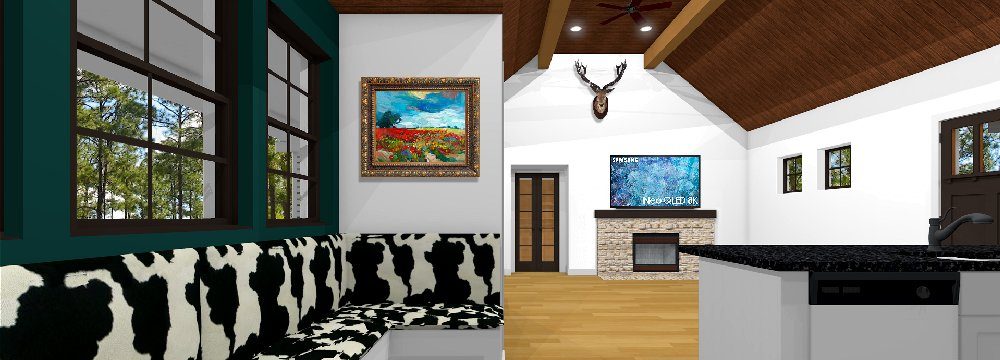
Greywater is any household wastewater with the exception of wastewater from toilets, which is known as blackwater. Typically, 50-80% of household wastewater is greywater from kitchen sinks, dishwashers, bathroom sinks, tubs and showers. Of course, if you use a composting toilet, 100% of your household wastewater is greywater.
Freshly generated greywater is not as nasty as blackwater, but if it’s not handled properly it can soon become so. Greywater decomposes at a much faster rate than blackwater and if stored for as little as 24 hours, the bacteria in it use up all the oxygen and the greywater becomes anaerobic and turns septic. After this point it is more like blackwater – stinky and a health hazard. In fact, many jurisdictions have strict regulations about disposal of greywater, some even require it to be treated as blackwater.
Not all greywater is equally “grey”. Kitchen sink water laden with food solids and laundry water that has been used to wash diapers are more heavily contaminated than greywater from showers and bathroom sinks. Although greywater from these sources contains less pathogens than blackwater, many regulatory bodies consider it as blackwater.
The safest way to handle greywater is to introduce it directly to the biologically active topsoil layer, where soil bacteria can quickly break it down, rendering the nutrients available to plants. This biological water purification is much more effective than any engineered treatment, thus protecting the quality of groundwater and surface waters.
The information on this page is used with the kind permission of Art Ludwig. Art is an ecological systems designer who has done extensive work with greywater systems. For more information, please visit his websitewww.oasisdesign.net where you’ll find more than 300 pages of information about greywater, including greywater mistakes and preferred practices as well as the leading books on greywater.
Source: Greywater Recycling
If you have a clay based subsoil (15-25% clay) you are in luck as your home’s raw material is below your feet. (You want the inorganic stuff down under the topsoil, no decomposing mulch and micro-organisms.) Mix your clay soil with some water, sand and straw. Mix with your feet, bare or booted, or with any number of mechanical mixers, or an oxen, or for a really large job, use a backhoe. See the ilovecob website for multiple mixing methods.
Cob Under Construction
Source: Cob Under Construction
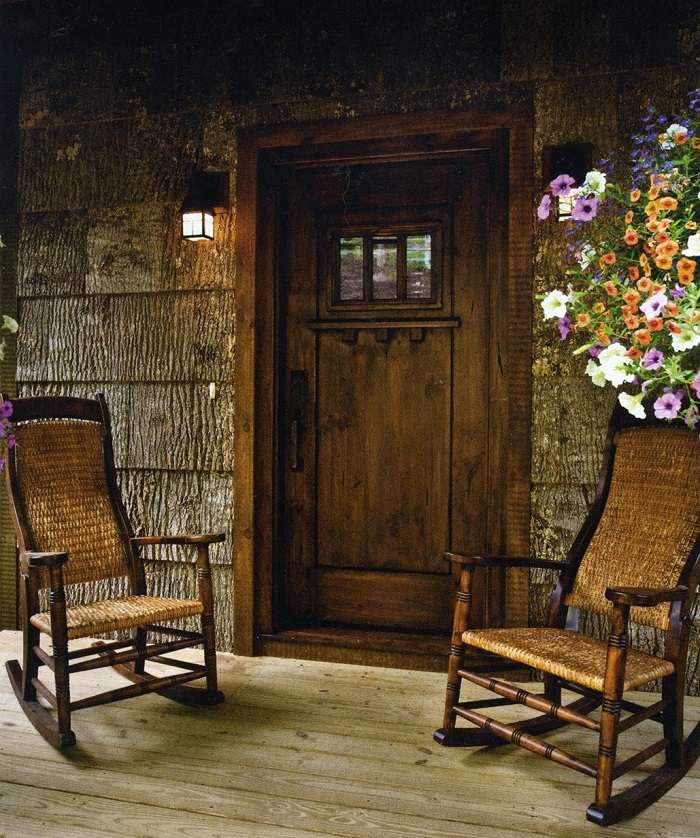 Bark Shingles was commonly used as home siding by the American Indians. Europeans arriving in America also found bark to be a useful siding. Chestnut siding was preferred until the chestnut blight killed the majority of chestnut trees. Now poplar bark is preferred. The bark is peeled from the felled tree and then flattened and kiln dried. The drying process kills all insects and makes the bark maintenance-free and impenetrable to future insect infestations. Bark siding has been known to last upwards of 80 years without need of sealant or stain. Poplar bark has an R-value of approx 3.7 and has excellent sound insulating qualities. Poplar wood is widely used in the furniture industry and utilizing the tree’s bark for siding means tree bark siding is a virtually zero waste product.
Bark Shingles was commonly used as home siding by the American Indians. Europeans arriving in America also found bark to be a useful siding. Chestnut siding was preferred until the chestnut blight killed the majority of chestnut trees. Now poplar bark is preferred. The bark is peeled from the felled tree and then flattened and kiln dried. The drying process kills all insects and makes the bark maintenance-free and impenetrable to future insect infestations. Bark siding has been known to last upwards of 80 years without need of sealant or stain. Poplar bark has an R-value of approx 3.7 and has excellent sound insulating qualities. Poplar wood is widely used in the furniture industry and utilizing the tree’s bark for siding means tree bark siding is a virtually zero waste product.
See much more about Bark: Bark Shingles
Green roof inspiration for homes, sheds and arbors
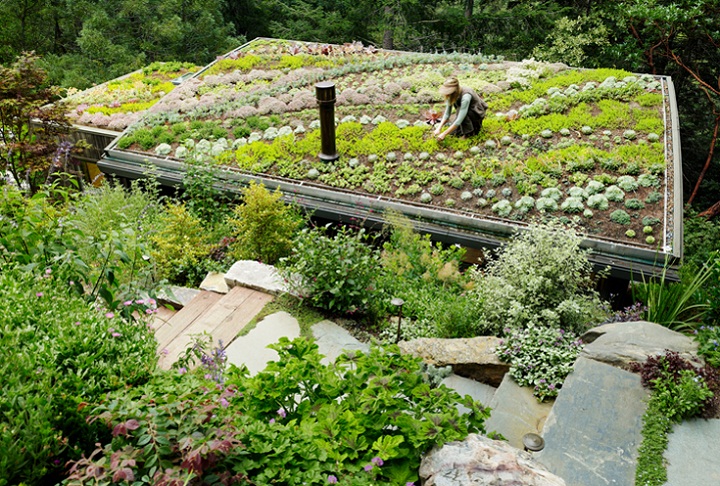
In Germany, it is estimated 12% of all flat-roofed buildings are living roofs, a number that is rapidly increasing as the German green roof industry continues to grow 10 to 15% per year.
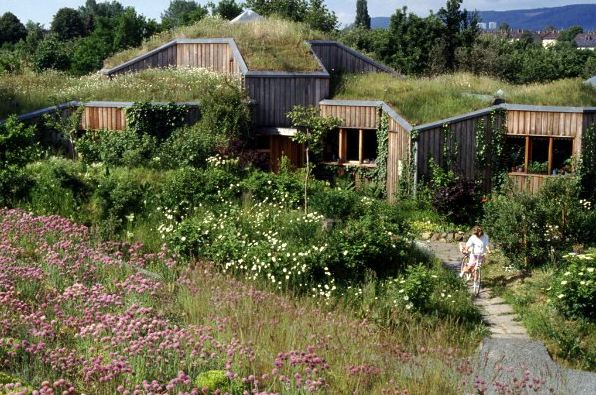 There are two main types of green roofs.
There are two main types of green roofs.
Intensive (labor-intensive) – Found on flat roofs and require about 4-24 inches of planting medium that is able to grow conventional lawns, vegetable gardens, small shrubs and even small trees. Intensive rooftops require sophisticated structural support and possibly irrigation. Typically weigh 80-120 lbs. per square foot, fully saturated. Are often park-like gardens for public or private use.
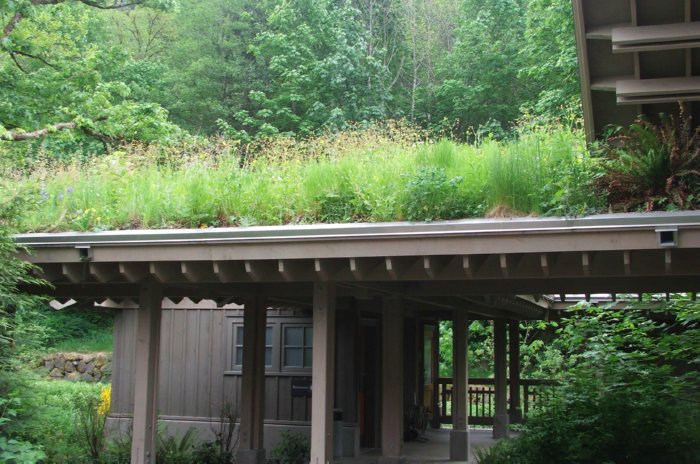 Extensive (sedum or grass) – Designed to be virtually self-sustaining and require low to no-maintenance. Needs a planting medium of 1-4 inches on a flat or gently sloping roof. Best with native vegetation or drought-resistant, cold-resistent, shallow-rooted plants, sedum, herbs, mosses or grass which generally grow no higher than several inches. They typically weigh 10-50 lbs. per square foot, fully saturated, depending on what type of growing medium is used.
Extensive (sedum or grass) – Designed to be virtually self-sustaining and require low to no-maintenance. Needs a planting medium of 1-4 inches on a flat or gently sloping roof. Best with native vegetation or drought-resistant, cold-resistent, shallow-rooted plants, sedum, herbs, mosses or grass which generally grow no higher than several inches. They typically weigh 10-50 lbs. per square foot, fully saturated, depending on what type of growing medium is used.
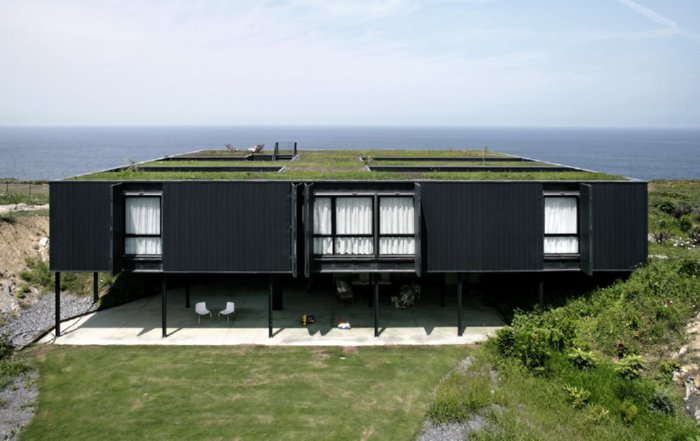 Benefits:
Benefits:
Green roofs are excellent insulators. Studies have shown that a green roof can reduce your cooling costs by 50% and more during the summer months and in the winter your home will retain 15-30% more heat than if you had a conventional roof. On a sunny, 80-degree-F day, a black roof can reach 180 degrees F; a white roof 120 degrees; and a plant-covered roof 85 degrees. Save money and use fewer energy resources.
Cost. There are many modular green roof kits available that might bring the costs down. Extensive green roof: $8 to $20 per square foot. Intensive green roof: $15 to $50 per square foot. A 2006 study by the University of Michigan comparing costs of conventional and green roofs showed that, on average, installing a green roof costs about $22.00/sq. ft. versus $16.00/sq. ft. for a conventional roof. In its life, however, it was estimated the green roof would save over $200,000 (in 2006 energy prices) with two-thirds of that coming from reduced energy needs.
Reduced storm water runoff. When the water falls on a typical roof, it’s often funneled off into storm water drains, collecting pollution along the way and polluting our waterways or increasing the amount of sewage to be treated. Green roofs ‘harvest’ rain water and put it to beneficial use.
Increased longevity of roofing membranes. The plants and growing medium are absorbing the solar rays, protecting the roofing materials from UV breakdown.The green roof also shields the membrane from extreme temperature variations, another cause of hastened degradation. According to Penn State research, a green roof will lengthen roof life by two to three times.*
Sound proofing. An extensive green roof can reduce sound from outside by 40 decibels, while an intensive roof can reduce sound by 46-50 decibels (Peck et al. 1999).
Aesthetic appeal. Nature relaxes, promoting psychological well-being.
Carbon is sequestered. Through the process of photosynthesis, carbon dioxide is removed from the atmosphere and stored as carbon in biomass.
Urban Heat Island Effect – if an urban area has numerous green roofs, heat island effect is lowered.
Habitat. When planted with native vegetation – a green roof becomes a habitat for indigenous species and migrating butterflies, birds and bees.
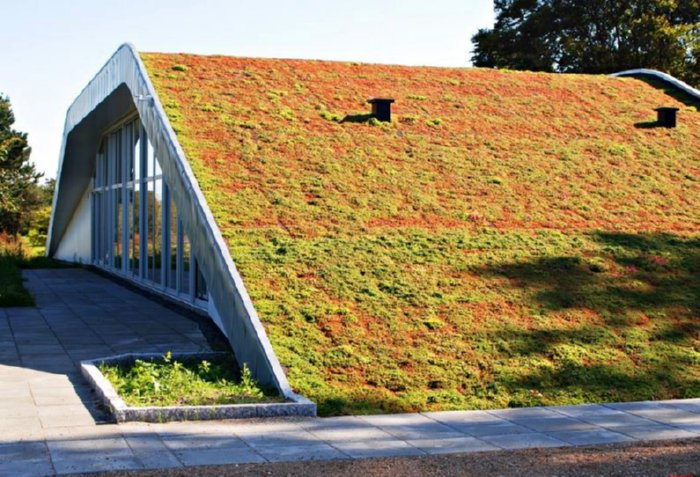 Resources:
Resources:
Green Roofs for Healthy Cities greenroofs.org
GreenRoofs.com greenroofs.com
See Lots More: Green Roofs